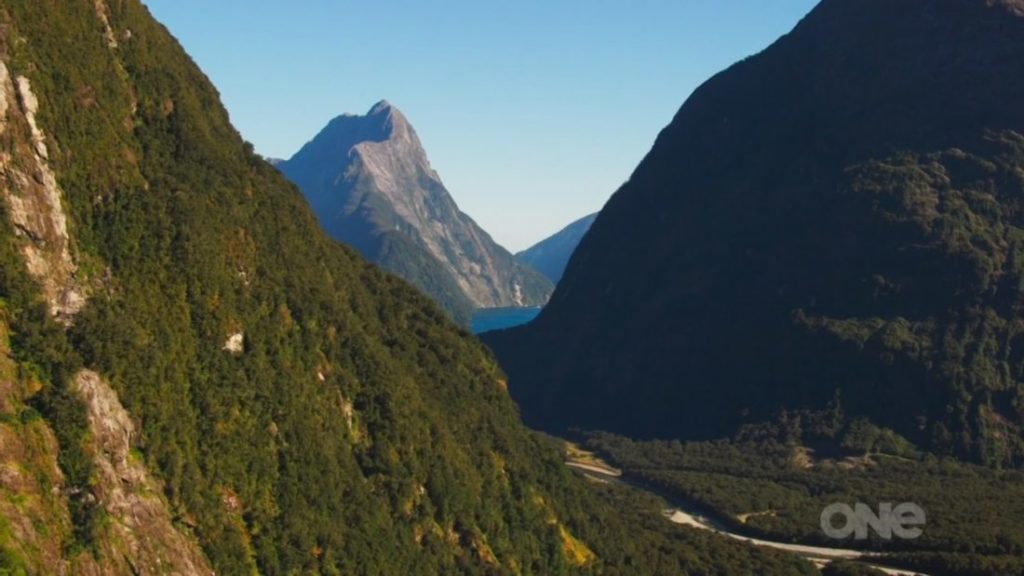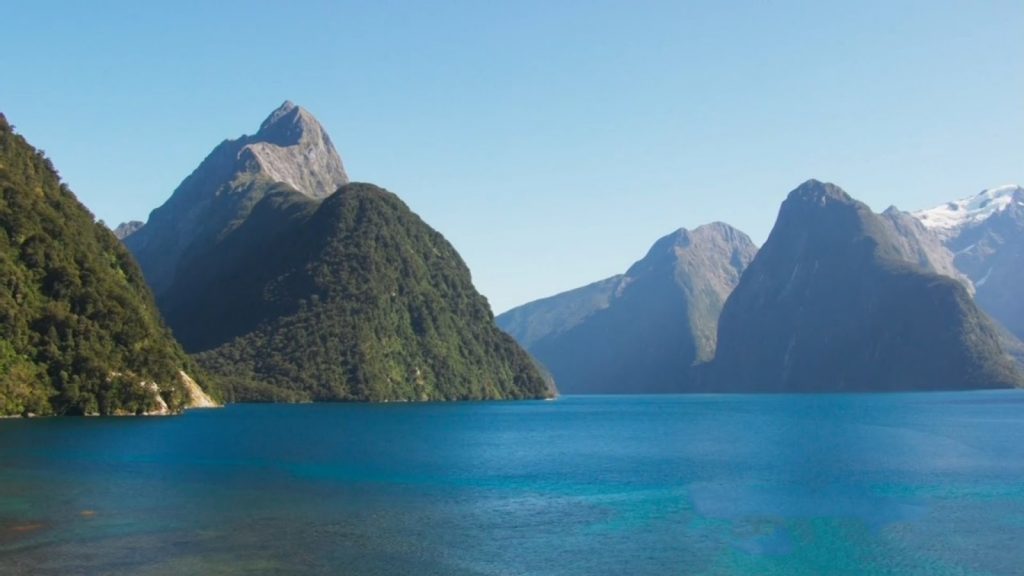In Railway Walks with Julia Bradbury episode 6, Julia Bradbury embarks on her most ambitious journey yet, traversing a landscape steeped in history and natural beauty. Episode 6, aptly titled “Gateway to the Highlands,” presents a walk that is not only the longest but arguably the most dramatic of the series. Julia’s path leads her through the wild and rugged terrain of the Scottish Highlands, a region once dominated by fierce clans and the legendary outlaw, Rob Roy.
The journey begins with Julia reflecting on the formidable reputation of the Highlands. For centuries, this area was considered perilous, a place where only the brave or the foolish would dare to tread. The imposing mountains and deep glens provided both a natural fortress and a hiding place for clans who fiercely defended their lands. Stories of clan feuds and battles echo through the valleys, creating a backdrop rich in cultural lore.
Julia’s walk is not just about covering miles; it’s a historical exploration. The route she follows intertwines with the tales of the Scottish clans, particularly focusing on the legacy of Rob Roy MacGregor. Known as the Scottish Robin Hood, Rob Roy’s adventures and defiance of the English crown have become legendary. Julia delves into his story, visiting key locations that were significant in his life and learning about the enduring impact of his legacy on the Highland identity.
The transformation of the Highlands began in earnest with the arrival of the railway in the 19th century. Before this, the area was isolated, its rugged terrain making travel difficult. The introduction of the railway not only opened up the Highlands to the rest of the country but also to the world. This technological advancement marked the beginning of a new era, where the once feared and remote Highlands became accessible to adventurers, tourists, and historians alike.
Julia’s route is a testament to this transformation. She walks along the old railway lines, now repurposed into walking paths, which offer a unique perspective on the landscape. These paths are a reminder of the engineering marvels of the past and the profound impact they had on connecting disparate regions. As Julia walks, she contemplates how the railway changed the lives of the Highlanders, bringing with it economic opportunities and a connection to the broader world.
The scenery Julia encounters is breathtaking. The Highlands are renowned for their stunning vistas – from towering mountains and serene lochs to dense forests and cascading waterfalls. Each step Julia takes reveals a new aspect of this diverse and dramatic landscape. She pauses frequently to take in the views, sharing her awe and admiration with the audience. The natural beauty of the Highlands is complemented by the changing weather, which adds an element of unpredictability and excitement to the journey.
Railway Walks with Julia Bradbury episode 6
Throughout her walk, Julia meets with local historians and experts who provide deeper insights into the region’s past. These encounters enrich the narrative, adding layers of context and understanding to the walk. Julia learns about the daily lives of the clans, their customs, and how they adapted to the harsh environment. She also discovers how the railway influenced the cultural and social fabric of the Highlands, leading to changes that are still evident today.
The journey is not without its challenges. The length and ruggedness of the walk test Julia’s endurance, but her determination and enthusiasm drive her forward. Each segment of the path presents its own obstacles, from steep climbs to rocky descents, yet these difficulties only enhance the sense of achievement and adventure. Julia’s experience serves as an inspiration to viewers, encouraging them to explore and appreciate the rich history and natural beauty of the Highlands.
As the episode draws to a close, Julia reflects on the significance of her journey. The “Gateway to the Highlands” walk is more than a physical trek; it is a journey through time, offering a glimpse into the lives and stories that have shaped this remarkable region. Julia’s exploration highlights the resilience and spirit of the Highland people, as well as the transformative power of the railway.
“Railway Walks with Julia Bradbury: Episode 6 – Gateway to the Highlands” is a captivating exploration of one of Scotland’s most iconic landscapes. Julia Bradbury’s engaging narrative, combined with the stunning visuals and rich historical context, makes this episode a standout in the series. It is a must-watch for anyone interested in history, nature, and the enduring allure of the Scottish Highlands.
All Aboard Scotland’s Abandoned Railways: A Walker’s Paradise
From Iron Horses to Hiking Trails: Unveiling Scotland’s Forgotten Railway Lines
Britain, a land intrinsically tied to its railway legacy, once thrived on a vast network of tracks that fueled its industrial prowess. For a century, these railways were the lifeblood of the nation, connecting cities, towns, and villages, and facilitating trade and travel. However, as time marched on and transportation needs evolved, many of these lines fell into disuse, leaving behind a silent network of embankments, platforms, and viaducts.
Yet, from the ashes of this bygone era, a new purpose has emerged. These abandoned railways, once symbols of progress, have transformed into enchanting pathways for walkers and nature enthusiasts. They offer a unique opportunity to explore the country’s hidden corners, traverse picturesque landscapes, and uncover the remnants of a rich railway heritage.
A Journey Back in Time: How Railways Shaped Scotland’s Landscape and History
The story of Scotland’s railways is a captivating tale of ambition, engineering ingenuity, and societal transformation. These iron roads, snaking through rugged terrains and verdant valleys, played a pivotal role in shaping the nation’s landscape and connecting its communities. They facilitated the movement of goods and people, fueled economic growth, and opened up remote regions to tourism and development.
As you embark on a railway walk, you’ll be tracing the footsteps of history, encountering remnants of stations, bridges, and tunnels that whisper tales of a bygone era. You’ll witness the enduring impact of the railways on the environment, from the repurposing of old infrastructure to the flourishing of nature along these forgotten corridors.
The Allure of Abandoned Railways: Why Walkers and Nature Lovers Are Flocking to These Hidden Gems
In recent years, there has been a surge of interest in exploring abandoned railways. These forgotten paths offer a unique blend of history, nature, and adventure, attracting walkers, cyclists, and outdoor enthusiasts from all walks of life. The appeal lies in their tranquility, their scenic beauty, and the sense of discovery they evoke.
Walking along an abandoned railway is like stepping back in time. You’ll encounter remnants of the past, such as old station platforms, signal boxes, and even the occasional abandoned train carriage. The tracks themselves, now overgrown with vegetation, provide a unique and level pathway, making them accessible to walkers of all abilities. Moreover, the absence of motorized traffic creates a peaceful and serene atmosphere, allowing you to fully immerse yourself in the surrounding nature.
The Callander & Oban Railway: A Gateway to the Highlands
Callander: A Victorian Railway Boomtown
Callander, a charming town nestled in the heart of Scotland, experienced a remarkable transformation during the Victorian era. With the arrival of the railway in 1858, this once-sleepy settlement blossomed into a bustling hub of activity. The railway station, an architectural marvel of its time, became the gateway to the Highlands, attracting tourists, traders, and adventurers alike.
The town’s streets, once quiet and unassuming, were now filled with the clatter of horse-drawn carriages and the excited chatter of visitors. Hotels, shops, and restaurants sprang up to cater to the influx of travelers, and the air buzzed with the energy of a town on the rise. Callander had become a railway boomtown, its fortunes forever intertwined with the iron road that had brought it to life.
Loch Lubnaig to Strathyre: Wordsworth’s Retreat and Rob Roy’s Territory
Leaving the vibrant atmosphere of Callander behind, the railway journey continued north, following the meandering River Teith towards the picturesque Loch Lubnaig. This tranquil loch, nestled amidst rolling hills and verdant forests, was a favorite haunt of the renowned poet William Wordsworth. He sought solace in its serene beauty, finding inspiration for his verses in the surrounding landscapes.
Further along the line, the railway reached the village of Strathyre, a place steeped in history and legend. This was the stomping ground of the infamous Rob Roy MacGregor, a folk hero and outlaw whose exploits have been immortalized in literature and film. The railway’s arrival in Strathyre brought modernity to this ancient land, connecting it to the wider world and opening up new opportunities for its inhabitants.
Glen Ogle: A Test of Engineering and a Feast for the Eyes
As the railway ventured deeper into the Highlands, it encountered the formidable Glen Ogle. This steep-sided valley presented a significant engineering challenge, requiring the construction of a magnificent viaduct to carry the line across its depths. The Glen Ogle Viaduct, a testament to Victorian engineering prowess, stands as an iconic landmark to this day.
The journey through Glen Ogle was not only a test of engineering but also a feast for the eyes. Passengers were treated to breathtaking views of the surrounding mountains, cascading waterfalls, and lush forests. The railway had opened up this remote and rugged landscape, making it accessible to those who sought adventure and natural beauty.
Killin Junction: Where Two Railways Converged
The Callander & Oban Railway, the main artery of this Highland route, reached a pivotal point at Killin Junction. Here, it intersected with the Killin branch line, a smaller railway that served the village of Killin and provided access to the scenic Loch Tay. This junction became a bustling interchange, with passengers and goods transferring between the two lines.
The arrival of the railway at Killin Junction had a profound impact on the local community. It brought new economic opportunities, facilitated trade, and opened up the region to tourism. The village, once isolated and remote, was now connected to the wider world, its fortunes forever changed by the arrival of the iron horse.
The Killin Branch: A Community’s Railway Legacy
Killin: A Village Transformed by the Railway
In the heart of the Scottish Highlands, the quaint village of Killin was once a tranquil haven, nestled amidst breathtaking scenery. However, the arrival of the railway in 1886 irrevocably altered its destiny. The once-isolated village was suddenly thrust into the limelight, becoming a sought-after destination for Victorian tourists eager to experience the rugged beauty of the Highlands.
The railway station, a modest yet charming structure, became the epicenter of Killin’s transformation. It was here that visitors disembarked, their hearts filled with anticipation for the adventures that awaited them. The village, in turn, embraced the influx of tourists, with hotels, shops, and other The Clan MacNab: Guardians of the Land and its Railway History
The history of Killin is inextricably linked to the Clan MacNab, a proud and resilient clan that has inhabited the area for centuries. The MacNabs, with their deep-rooted connection to the land, played a crucial role in the development of the Killin branch line. They recognized the potential benefits that the railway could bring to their community and actively campaigned for its construction.
The clan’s ancestral home, Kinnell House, stands as a testament to their enduring legacy. This historic house, overlooking the village and the surrounding hills, has witnessed the ebb and flow of time, from the clan’s ancient origins to the arrival of the railway and beyond. Today, it serves as a reminder of the MacNabs’ unwavering commitment to their heritage and their pivotal role in shaping Killin’s railway history.
The Falls of Dochart and Loch Tay: A Scenic Finale to a Railway Adventure
The railway journey to Killin culminated in a breathtaking finale: the majestic Falls of Dochart and the serene expanse of Loch Tay. The falls, a natural wonder of cascading water and swirling currents, captivated visitors with their raw power and beauty. They were a fitting end to a railway adventure that had taken travelers through some of Scotland’s most spectacular scenery.
Loch Tay, a vast freshwater loch nestled amidst towering mountains, offered a tranquil retreat for weary travelers. Its calm waters reflected the surrounding peaks, creating a scene of unparalleled beauty. Visitors could embark on boat trips, explore the loch’s many islands, or simply relax and soak in the peaceful atmosphere. The railway had not only brought them to this idyllic location but had also provided them with the means to fully appreciate its natural splendor.
Conclusion: Embark on Your Own Railway Walk
Practical Tips for Planning Your Railway Walk
Embarking on a railway walk is an adventure that blends history, nature, and personal discovery. But, like any outdoor pursuit, it requires careful planning and preparation. Here are some essential tips to ensure your journey is safe, enjoyable, and rewarding:
- Research Your Route: Before you set off, research the railway line you plan to walk. Gather information about its history, terrain, access points, and any potential hazards. Numerous online resources and guidebooks offer detailed descriptions and maps of abandoned railways throughout Scotland.
- Pack Essentials: Ensure you have appropriate clothing, footwear, and a backpack containing water, snacks, a first-aid kit, a map, and a compass or GPS device. It’s also wise to carry a fully charged mobile phone for emergencies.
- Check the Weather: Scottish weather can be unpredictable, so always check the forecast before heading out. Be prepared for rain, wind, and even snow, depending on the time of year.
- Respect the Environment: Remember that abandoned railways are often home to diverse wildlife and fragile ecosystems. Stay on designated paths, avoid disturbing plants and animals, and take your litter home with you.
- Inform Someone of Your Plans: Always let someone know where you’re going and when you expect to be back. This is a crucial safety precaution, especially if you’re walking alone or in remote areas.
The Enduring Appeal of Scotland’s Abandoned Railways
Why do abandoned railways hold such allure for walkers and nature lovers? Perhaps it’s the unique blend of history and nature they offer. Walking along a disused railway track is like stepping back in time, as you encounter remnants of a bygone era: moss-covered station platforms, rusty signal boxes, and even the occasional abandoned train carriage.
Furthermore, these forgotten lines often traverse some of Scotland’s most picturesque landscapes, offering stunning views of mountains, lochs, and forests. The absence of motorized traffic creates a peaceful and serene atmosphere, allowing you to fully immerse yourself in the natural beauty that surrounds you. It’s a chance to escape the hustle and bustle of modern life and reconnect with nature in a truly unique way.
Discover the Magic of Railway Walking
If you’re seeking a new adventure, one that combines history, nature, and a touch of nostalgia, then why not embark on a railway walk? Scotland’s abandoned railways offer a treasure trove of hidden gems waiting to be discovered. Whether you’re a seasoned hiker or a casual stroller, there’s a railway walk to suit every ability and interest.
So, lace up your boots, pack your backpack, and set off on an unforgettable journey through Scotland’s railway past. You’ll be rewarded with breathtaking scenery, fascinating history, and a sense of tranquility that’s hard to find elsewhere. Who knows what treasures you might uncover along the way? Perhaps a hidden waterfall, a long-forgotten tunnel, or simply the joy of walking in nature’s embrace. The possibilities are endless. Step onto the tracks of history and let the adventure begin!
F.A.Q. Railway Walks with Julia Bradbury episode 6
Q.: What is the focus of “Railway Walks with Julia Bradbury” episode 6?
A.: Episode 6, titled “Gateway to the Highlands,” focuses on Julia Bradbury’s most ambitious walk yet through the Scottish Highlands, highlighting both the region’s historical significance and natural beauty.
Q.: What historical figures and events are explored in this episode?
A.: The episode delves into the stories of the Scottish clans and the legendary outlaw Rob Roy MacGregor, exploring their impact on the Highlands and their enduring legacy.
Q.: How did the railway transform the Scottish Highlands in the 19th century?
A.: The introduction of the railway in the 19th century made the previously isolated Highlands accessible, fostering economic opportunities and connecting the region to the rest of the country and the world.
Q.: What kind of landscapes and scenery can viewers expect to see in this episode?
A.: Viewers will experience breathtaking vistas of the Scottish Highlands, including towering mountains, serene lochs, dense forests, and cascading waterfalls, all complemented by the region’s changing weather.
Q.: How does Julia Bradbury’s walk in this episode provide insights into the Highlands’ history?
A.: Julia’s walk, intertwined with visits to key historical sites and discussions with local historians, offers a deep exploration of the region’s past, focusing on clan life, customs, and the transformative impact of the railway.
Q.: What makes Julia Bradbury’s route in this episode unique?
A.: Julia’s route follows old railway lines repurposed as walking paths, providing a unique perspective on the landscape and the historical significance of the railway’s impact on the Highlands.
Q.: What challenges does Julia face during her walk in this episode?
A.: Julia encounters various challenges including the length and ruggedness of the walk, steep climbs, and rocky descents, testing her endurance and determination.




